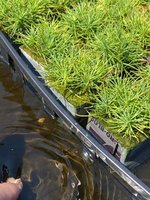Check out the Yara fertigation manual:
https://www.yara.co.uk/siteassets/crop-nutrition/media/uk/uk-product-brochures/specialities/yara-fertigation-manual-2020.pdf/
Then on mineral fertilizers in general:
https://www.yara.co.uk/siteassets/crop-nutrition/media/uk/uk-agronomy/yara-guide-to-mineral-fertilizers.pdf/
Using fertigation gives commercial growers a ton of control.
Getting a bag of 25kg of commercial fertigation fertilizer is not that expensive. Especially not compared with 25kg or more of consumer mineral-organic fertilizer.
But for fertigation, you need low EC water to start with. So you either need to collect rain water or use RO water. And check the EC. The pH will turn out nicely with the right EC anyway.
Now beneficial it is depends on what your minimum factor for health is. For bonsai, you don't always want to maximize growth anyway.
When you grow into soil, you definitely need a 'living soil', so then you need some organic material and organic fertilizer. If you grow a bonsai in substrate, maybe going 50/50 is the right way.
When I did some digging into fertilizer the last couple or weeks,, I was actually surprised that bonsai people don't explore this more. Especially when they are growing into CEC media like lava rock, pumice, coarse sand, or even low CEC media like akadama, turface and kanuma. Vs high CEC materials used in the nursery industry like peat and pine bark. NH4+ seems to be one at risk of build-up in the soil. But for many of the others, the risk doesn't seem so high.
You could actually water with lower EC water than your normal tap water. So you add less minerals to your soil, but only useful minerals. You remove sodium, choride, bicarbonate, but instead add NPK. Cal and Mag usually are there already. And then you have all the chelated metal ion micro-nutrients there as well. I can't say there is no risk in fertilizing a bonsai in substrate with 0.5 to 1 EC half strength fertigation. Compared to using 0.5 EC normal tap water. But it defilitely looks attractive. But if you have to do everything manually, it also takes a fair bit of time. That said, you don't need to fertigate every watering. Not even close.
I will use Yara Kristalon Azur for azaleas now. But I have the option to mix in some other products for higher calcium or lower nitrogen, for later in the season.
So I would answer your questions with
1) Yes, but not for everyone in all cases, or at least as an addition, not a complete replacement.
2) You use the dosage on the package, then decide if you want to go full strength or half strength, then after making dilution, you check with an EC meter
3) You can change it, but better to change gradually to prevent a shock response. People that grow tomato in hydroponics say they notice a 2-day shock period if they instantaneously go from a high N fertilizer to a low N high K fertilizer.






